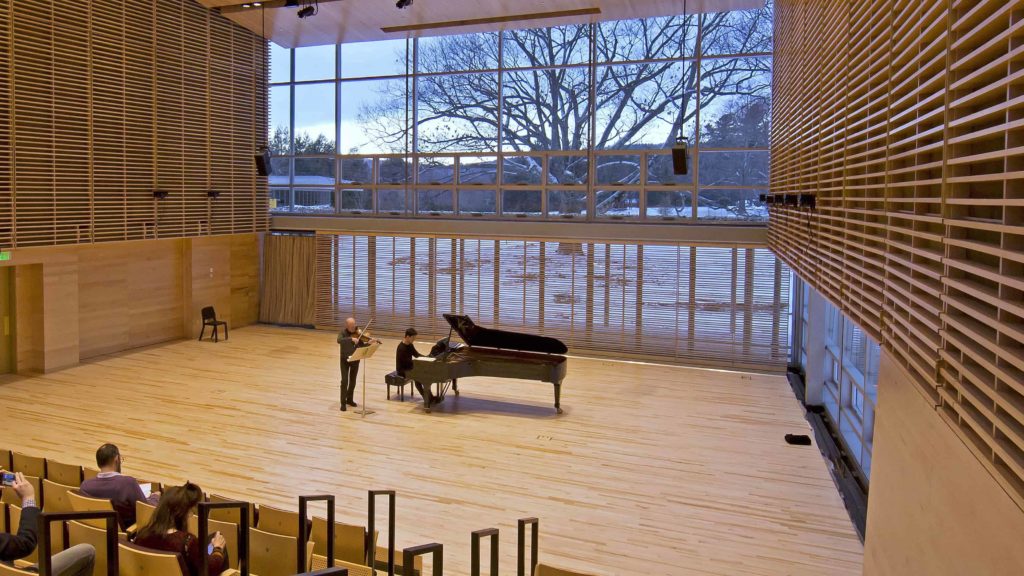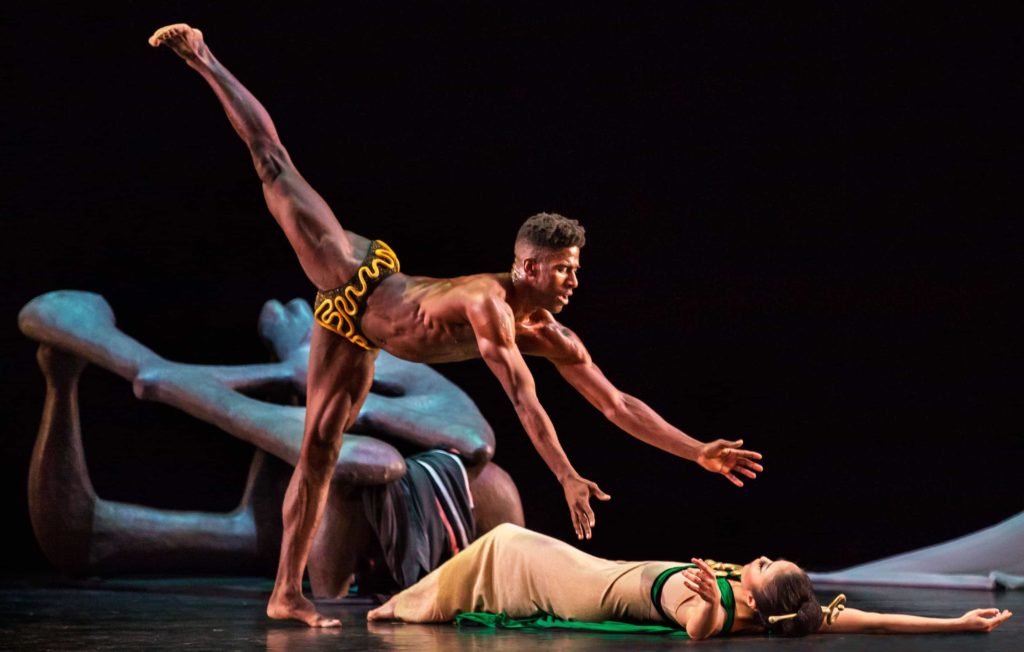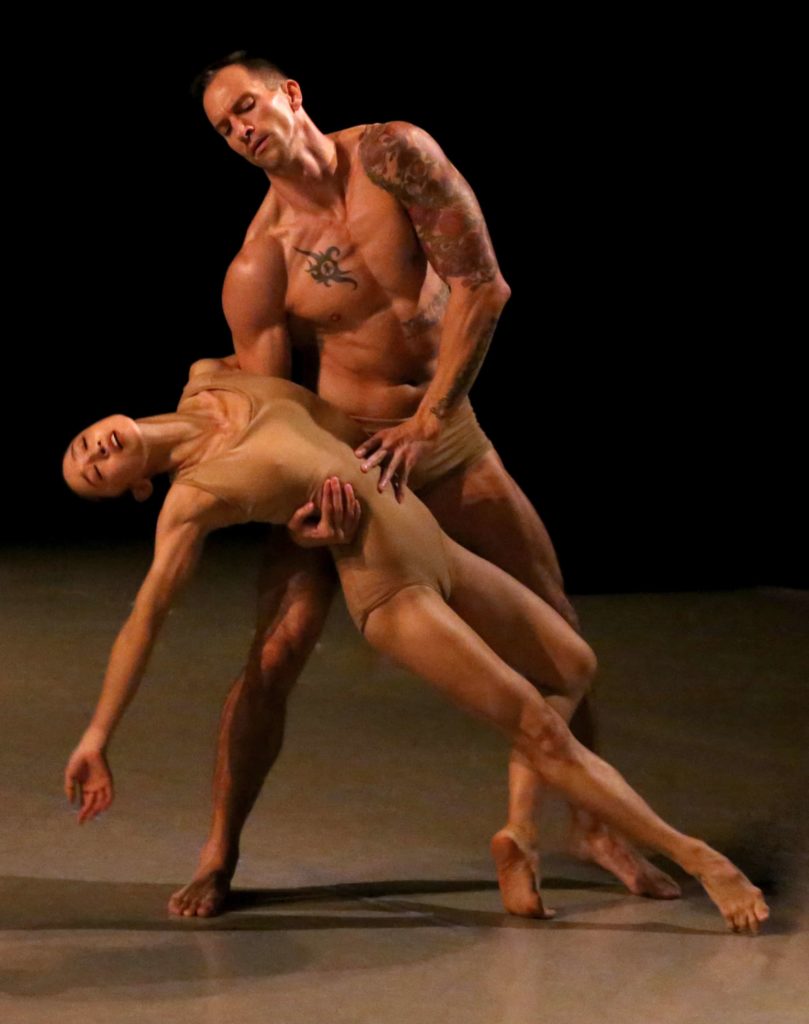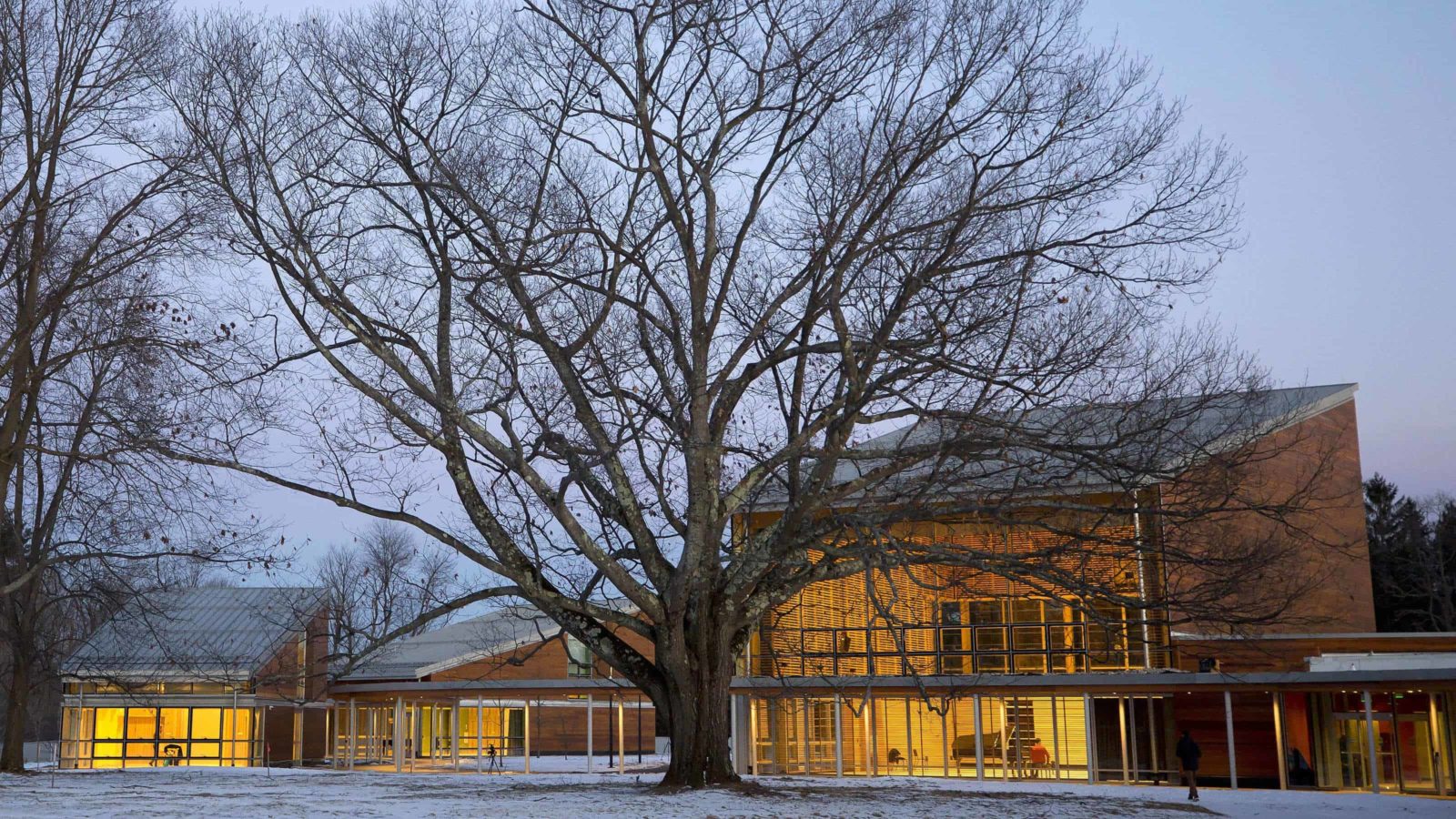On a clear night, the sun sets behind a hundred-year-old oak tree, and from the central concert hall the audience can look west into the massive branches, and out across the Tanglewood campus in the snow. The performance space is an open room of light wood, and the wall behind it is made of glass.
In early spring, two men plan to dance here in a duet, barefoot and fluid, curling to protect their bodies and opening out with their arms wide. Martha Graham Dance Company will Kyle Abraham’s variation on Martha Graham’s Lamentations at the Tanglewood Learning Institute in the Linde Center.
The campus’ first year-round venue is coming into the last few months of its first year of fall, winter and spring programming, and the energy is high.
“We don’t call it the off season,” says TLI director Sue Elliott. “Within a year, we have eliminated that from our thinking. We’re living up to promises we’ve made that we will be here year-round.”
The response she sees is positive and growing. The TLI started off at a sprint in its first summer and drew in more than 14,000 people between June and August, she says, and almost a third of them are new to Tanglewood and the Boston Symphony Orchestra. From the fall to spring they have been selling out concerts, and the crowds for monthly film screenings have been higher than in the summer.
Her programming expands beyond classical music into cinema, dance, visual art, and in the fall, winter and spring, she says, she has room to experiment. Last fall she opened a new Taste series of dinners and music, with a free walk-in class on Argentine tango. Eighty five people kept the dancing going for an hour after the end of the workshop, she says. The TLI served an Argentine dinner and held a concert with internationally acclaimed musician Juan Pablo Jofre on the bandoneon, a beautifully made accordion.
“He’s an exceptional musician,” Elliott says, “and the interplay between him and the audience was powerful. The environment here lends itself to a close connection.”





In the spring, they can share this kind of intimate space with Martha Graham Dance Company dancers 20 feet away.
“People love seeing the dancers up close,” says Janet Eilber, artistic director for the company. “They can hear their breathing and feel more of the effort.”
She has found the space warmly open to perform in, with the mountains close by.
In March, the company plans an evening at the TLI exploring Graham’s Night Journey, as Jocasta tells the Oedipus story in her eyes and confronts the truth about the man she has married. And in April they have the company returning with new variations on Lamentations, a work Eilber sees transforming Graham’s career and Modern dance.
“I see Lamentations as the seed of all her work,” Eilber says.
Graham changed dance across the world, she says. At a time when the dance of the day often felt escapist and fanciful, “she was discovering a way of moving that expressed who we really are and what we feel.”
She intensified body language, Eilber says. She studied the way a body holds stress or euphoria, especially at its core, and how emotion rides on breath.
In Lamentation she explored raw pain, and the effect was electric. In 2007, the company commissioned three choreographers create new work in response to Graham’s, and they answered so powerfully that the work became ongoing, and the company now has 15 variations.
They have each drawn on different elements of her work, Eilber says, themes of grief, or gestures like putting her hands together under her eyes as though drying tears. At the TLI, company dancers will perform duets and a quartet by Aszure Barton, Kyle Abraham and Bulareyaung Pagarlava, in a co-presentation with Jacob’s Pillow International Dance Festival.
Elliott has created programming with fellow Berkshire organizations from the first. She has been building partnerships in the Berkshires since the TLI opened last summer, and they are steadily expanding — Berkshire International Film Festival and IS183 Art School, Norman Rockwell Museum, Chesterwood …
“It’s a dream,” says Kelley Vickery, artistic director of BIFF, warm in her excitement at watching the monthly film series grow. Working with the TLI, she has doubled BIFF’s year-round programming, and the TLI has offered become a venue in BIFF’s annual film festival.
In the winter and spring Vickery is bringing monthly films to the TLI with a wide-ranging musical theme — the San Fransisco Gay Men’s Chorus touring in the Deep South, Aretha Franklin, Arvo Pärt.
Music remains central here, Elliott says. While amateur photographers in an art workshop may be out looking at the new leaf buds on the oak tree, the TLI has become a good space for the Boston Symphony Orchestra’s musicians to explore their own projects, and they are returning for larger concerts as well.
On Easter weekend, the Tanglewood Festival Chorus will celebrate its 50th anniversary by returning home to perform Rachmaninoff’s All-Night Vigil, first performed in the spring 105 years ago.
Here that day, the chorus’s conductor, James Burton, will offer a composition stirring with the spring. The TLI will hold “Reclaiming our connection to nature,” a conversation with Mass Audubon and a performance of The Lost Words by Boston Symphony Children’s Choir. Burton has taken his inspiration from a recent book of the same name that invokes and illustrates words a widely used children’s dictionary took out saying that not enough children used them — words like acorn, bluebell, kingfisher and wren.
As Martha Graham’s company prepares to return, Elliott quietly marvels at the ties that lead many creative people to this place. Copland was here when Graham wrote to him asking him to compose the music to Appalachian Spring.
He knew Tanglewood well — he taught for years at the Tanglewood Music Center and mentored a young Leonard Bernstein.
Last fall, the Martha Graham Company celebrated the 75th anniversary of Appalachian Spring here, Elliott says. On the night of the performance, a young woman arrived at the box office who had come from Boston. She said she had found out about the event that morning, and she had had to come. Her father had danced with Martha Graham in the 1940s. So she crossed the state, and head home late, because there was no other place she could be tonight.
This story first ran in the spring 2020 Berkshire Magazine — and it was written in the winter, before Covid-19 changed the landscape. It runs here with Berkshire Magazine’s fill permission, and my thanks to Anastasia Stanmeyer. (The publish date of this post reflects the time the story ran in print, for clarity, though I am publishing it later here.)

